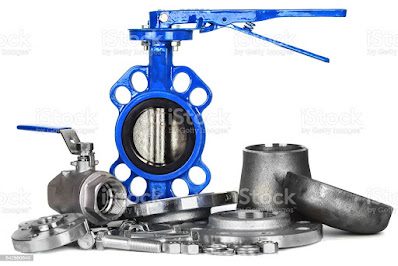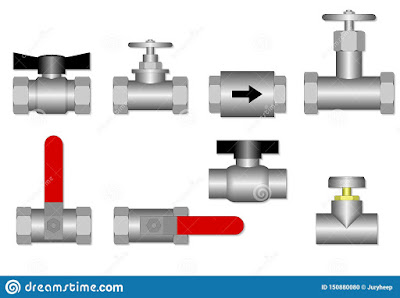Types of Valve
Valves are mechanical devices that control the flow of fluids (liquids, gases, or slurries) by opening, closing, or partially obstructing passageways. There are various types of valves designed for different applications, and they are categorized based on their function, design, and the industry they serve. Additionally, valves are subject to various codes and standards that ensure their proper design, manufacturing, and use. Here are some common types of valves and relevant codes and standards:
- Pinch Valve: Codes and Standards: MSS SP-136
- Foot Valve: Codes and Standards: MSS SP-71, ASME B16.34
- Cryogenic Valve: Codes and Standards: BS 6364, ISO 28921-1
- Knife Gate Valve: Codes and Standards: MSS SP-81, MSS SP-135
- Plug Valve: Codes and Standards: API 599, API 6D, ASME B16.34
- Ball Valve: Codes and Standards: API 608, API 6D, ASME B16.34
- Plug Valve: Codes and Standards: API 599, API 6D, ASME B16.34
- Plug Valve: Codes and Standards: API 599, API 6D, ASME B16.34
- Bellows Seal Valve: Codes and Standards: API 594, ASME B16.34
- Diaphragm Valve: Codes and Standards: MSS SP-88, ASME B16.34
- Gate Valve: Codes and Standards: API 600, API 603, ASME B16.34
- Balancing Valve: Codes and Standards: ASHRAE 90.1, ASME B16.34
- Globe Valve: Codes and Standards: API 602, API 603, ASME B16.34
- Check Valve: Codes and Standards: API 594, API 602, ASME B16.34
- Needle Valve: Codes and Standards: API 600, API 602, ASME B16.34
- Safety Valve: Codes and Standards: API 526, ASME Section I and VIII
- Butterfly Valve: Codes and Standards: API 609, MSS SP-67, ASME B16.34
- Control Valve: Codes and Standards: ISA-S75.02, ANSI/ISA-75.08.01, IEC 60534
- Pressure Reducing Valve (PRV): Codes and Standards: API 526, ASME Section I and VIII
- Pressure Relief Valve (PRV): Codes and Standards: API 520, API 526, ASME Section VIII
It’s important to note that these codes and standards can vary depending on the industry and the specific application of the valve. For example, the oil and gas industry may have different requirements than the pharmaceutical or water treatment industries. Always refer to the appropriate codes and standards for your specific application and location.
Valve (API 600)
Valve API 600 refers to the American Petroleum Institute (API) standard for bolted bonnet steel gate valves. API 600 is a widely recognized industry standard that specifies the requirements for design, materials, manufacturing, testing, and inspection of gate valves used in oil, gas, and petrochemical applications.
Here are some key features and specifications of valves designed according to API 600:
- Design: API 600 gate valves are designed with a bolted bonnet construction, where the bonnet is bolted to the valve body. This design ensures a tight and secure sealing of the valve.
- Body and Bonnet Materials: API 600 specifies the use of various materials for the valve body and bonnet, including carbon steel, low alloy steel, and stainless steel. The material selection depends on the service conditions and requirements.
- Gate and Seat: The gate of an API 600 valve is typically a solid wedge or a flexible wedge design. The seat is designed to provide a tight and leak-free closure when the valve is fully closed.
- End Connections: The valve can have flanged or butt-weld end connections, depending on the specific application and pipeline requirements.
- Pressure Class: API 600 valves are available in various pressure classes, ranging from 150 to 2500. The pressure class indicates the maximum pressure the valve can handle.
- Size Range: API 600 gate valves are manufactured in a wide range of sizes, typically starting from 2 inches and going up to several feet in diameter.
- Testing and Inspection: API 600 requires rigorous testing and inspection procedures to ensure the quality and performance of the valves. These include hydrostatic testing, shell and seat leakage testing, and dimensional checks.
It’s important to note that API 600 is specific to gate valves, and the API standards cover other types of valves used in the industry, such as ball valves, globe valves, and check valves. Manufacturers and users often adhere to these standards to ensure reliable and safe operation of valves in demanding applications within the oil and gas sector.
Types of Valve
On the basis of our application and our requirements, there are many types of valves that are available in the markets. But during the selection of the right valve for the right application, the costing of the valve is the most important factor because the 20 to 25% costing of any systems is used for valves, but in some cases when we are going to select a butterfly valve the costing of valve will go up. The following types of valves are used in industries based on the applications of it. The types of valves are mentioned below.
- Gate valve
- Ball valve
- Butterfly valve
- Pressure relief valve
- Pressure safety valve
- Needle valve
- Pinch valve
- Plug valve
- Globe valve
- Pinston valve
Gate valve
It is a common type of valve and is used in almost every pipeline system, it is easy to operate and less expensive. It is also called a linear motion valve; the basic use of gate valve is to start or stop the fluid inside the service. The condition in the piping system during installation is either in fully open condition or fully closed position, this type of valve is used in the following services live as steam, lube oil, and hydrocarbons, the mansion image is a gate valve. Now a days there are many types of gate valve available in the industry, later we will discuss in detail in another chapter. The main part used in the gate is the following stem, body, yoke, gland, gland follower, gland flange, steam yoke nut, hand wheel, lock nut, stud bolts, gaskets, casing gaskets, and packing materials like gland or ceramic gaskets.
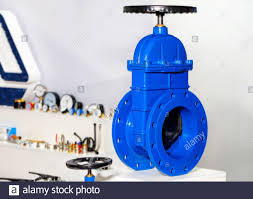 |
Ball valve
In the valve institute of the disc ball are used to prevent the liquid are regulate the liquid this is a quarter turn rotary motion valve and it is quick acting type which is operate at the 90 degrees turn off the wall handles wheels to operate the war the size of the wall one is less than the Great wall and lighter than as well. Ball values used in industry size range approx. 5 mm to 1200 mm, the body of this type of Basic is made of plastic, metal, chrome plated, costing, forging etc. There are many types of ball uses like as 3-way valve, floating ball, ternion mounted valve, 3-piece body ball valve, standard port ball valve, single body split body, top entry manually operated valve and others
Butterfly valve
This is also a quarter turn rotary motion valve and it is used to regulate, start or stop the service fluids. Butterfly valve use for large size applications as well as small size, the space required for installation in pipeline systems is very low as compared to other types of valves. It is also lightweight as compared to others but it is very expensive from other types of valve. Three types of butterfly valves are used in industries, followed on the basis of offset of disk,
- Single offset butterfly valve
- Double offset butterfly valve
- Triple offset butterfly valve
Pressure relief valve
It is used as a safety element of the process system. It means it is operating automatically when the pressure of the system goes up to a set pressure of liquid or gas. During the installation of this present pressure fixed approx. Design pressure of the system. When the pressure of the system goes above its design pressure, the pressure relief valve activates automatically and discharges the excess pressure of the system, the pressure relief valve is always in close conditions until the pressure of upstream reached the desire set pressure of it. This is use for liquids fluids services.
Pressure safety valve
Pressure safety valve use for safety of the system (pipelines) of equipment, PSV used for quick response, release fluids from the system to avoid over-pressurized and potential process safety incidents. It is also activated automatically when the pressure inside the service exceeds the set pressure limit of the system. The main difference between pressure safety valves and pressure relief valves is that both are used for the safety of the equipment and piping systems. However, PSV is used for compressible fluid or gas. Whereas PRV is used for NON compressible fluids like liquid and it will not open suddenly, it is activated gradually if pressure increases gradually but PSV activates quickly and fully open almost when pressure is exceeded beyond its fixed setup point pressure.
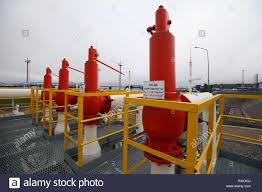 |
| pressure safety valve |
Needle valve
It is also called plunge valve and manually operates, it is used where the continue throttling is required for the flow, it means that regulating the flow is required. It is designed to control the flow with accuracy because its small size disc (needles) is installed. It is used for high-pressure services and small-bore piping. Body construction material may be used either machined body, forge material like carbon steel or stainless steel. Depending on the requirement of the service. The sitting material of the needles is very soft material used, like composite, same as other types of sitting materials use in other types of valves.
Globe valve
This type of valve is also used to stop, start or regulate the service fluid. This is used where a fully open valve is required because its body construction like that of its disc is removed entirely from the flow path during operation to open or it can be completely close to the flow path. It’s over perpendicular to the seating part. Globe valve is available in many disc types like ball type disc, needle type and composite types. There are three types used in industries: z type, I type, and angle type. The advantage of the glob valve, as compared to other valves, is easy to operate and fully closed or fully open operation.
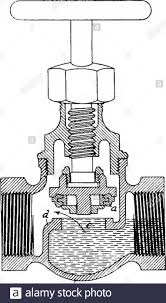 |
| globe valve |
Pinch valve
It is a two-way valve and designed to control the flow of corrosive fluid. This is also used for hundred percent open or a hundred percent close to the flow path.
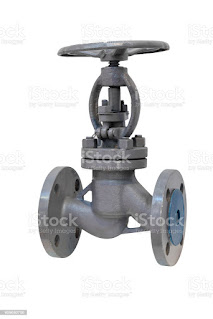 |
| globe valve |
